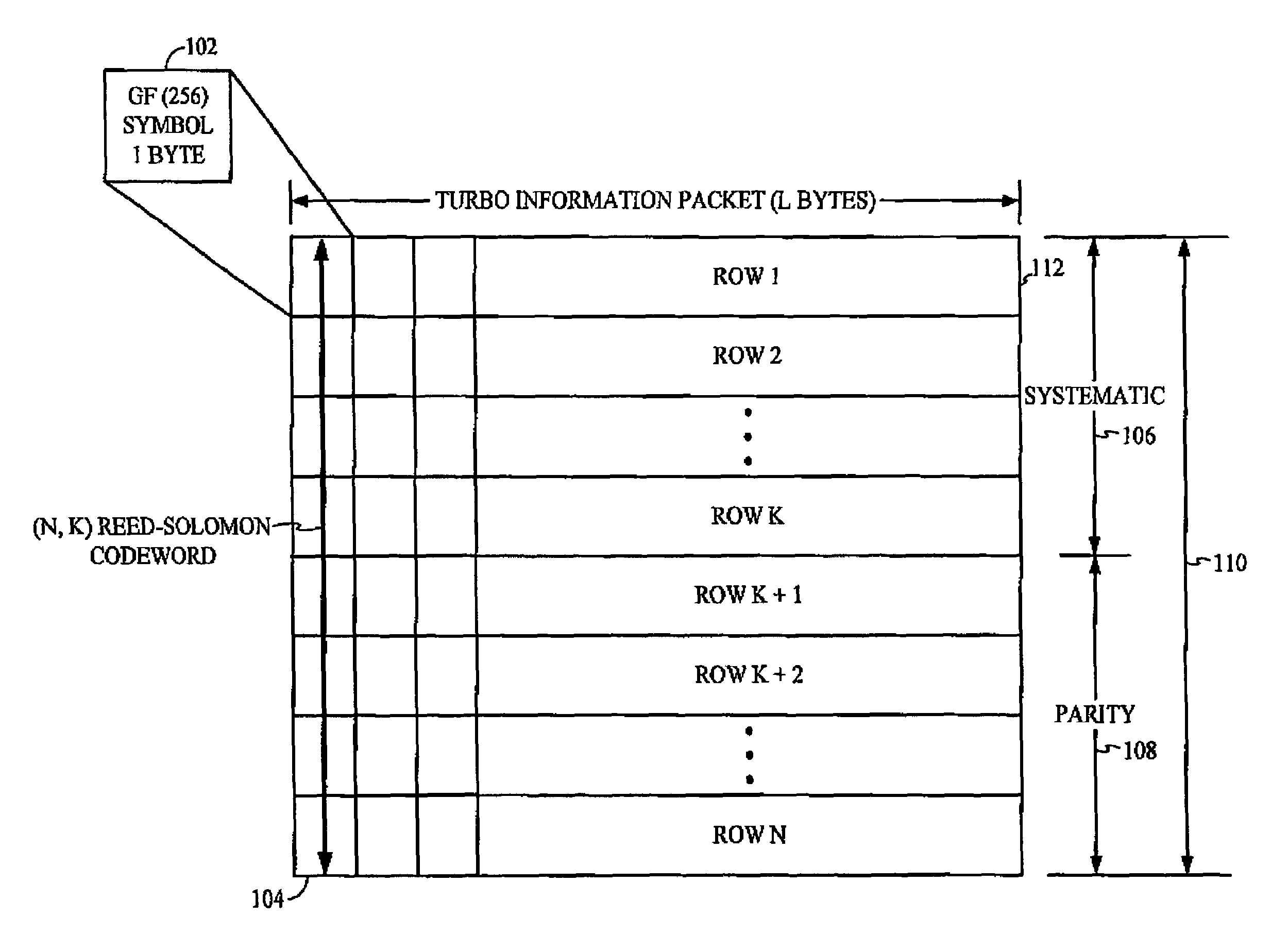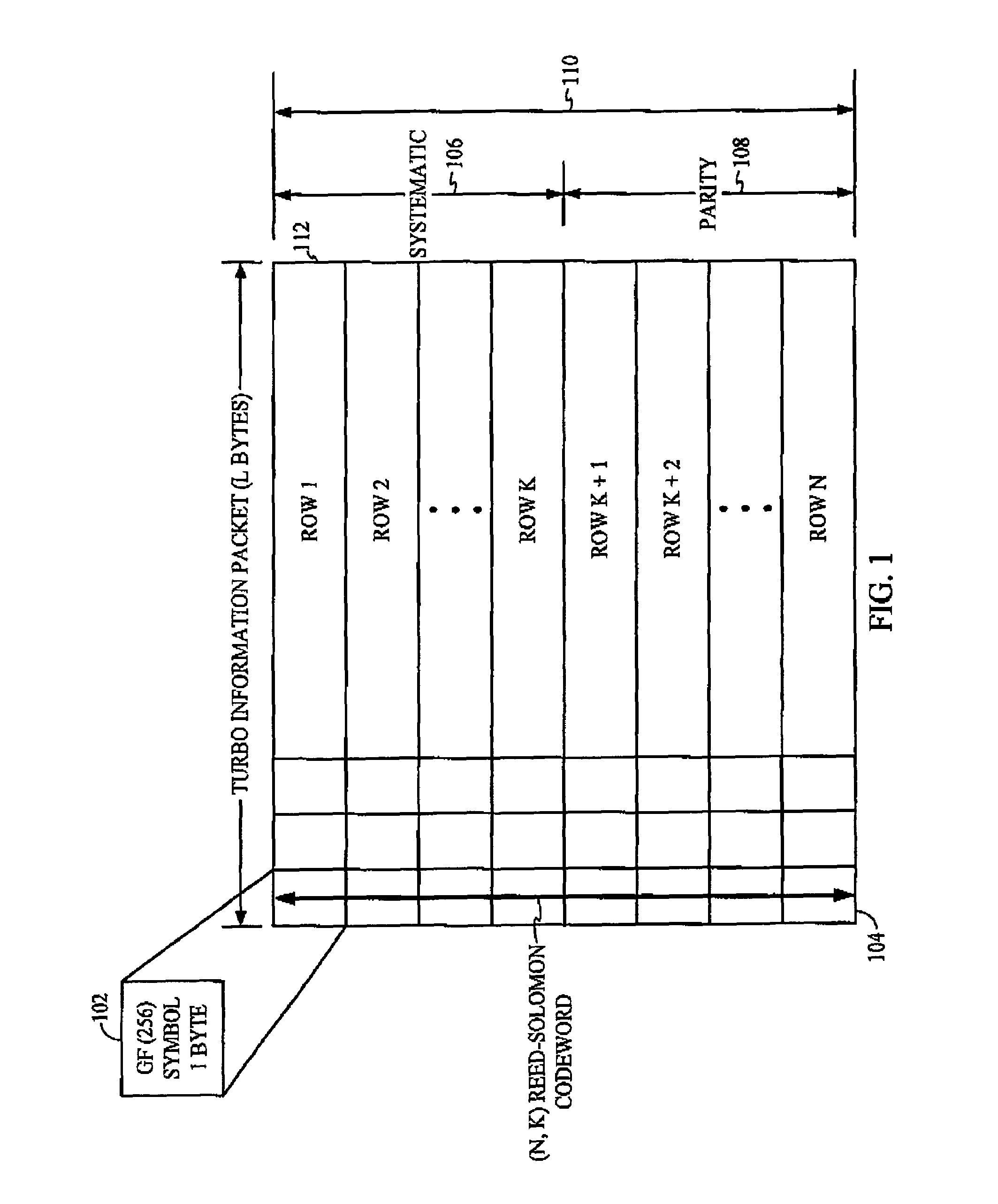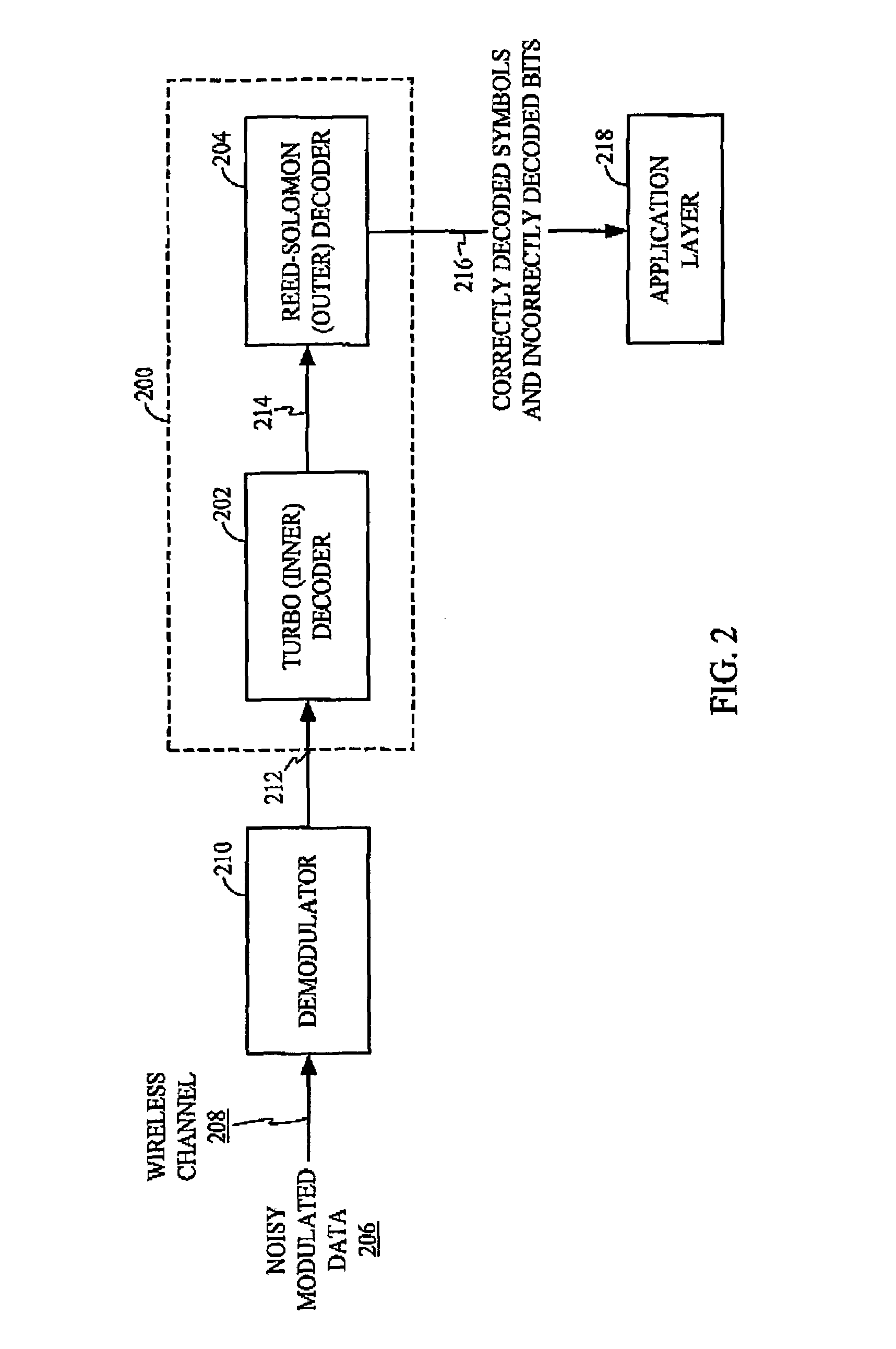Method and apparatus for joint source-channel map decoding
- Summary
- Abstract
- Description
- Claims
- Application Information
AI Technical Summary
Benefits of technology
Problems solved by technology
Method used
Image
Examples
Embodiment Construction
the correct value of the incorrectly received symbol.
BRIEF DESCRIPTION OF THE DRAWINGS
[0017]FIG. 1 is one example of symbols output from a source coder and formatted into a code block for Reed Solomon erasure coding followed by Turbo coding;
[0018]FIG. 2 is one example of a concatenated Turbo / Reed-Solomon decoding scheme;
[0019]FIG. 3 is one example of an illustration of neighboring 4×4 blocks providing correlating data for a corrupt block;
[0020]FIG. 4 is one example of a block diagram of a joint source-channel MAP entropy decoder;
[0021]FIG. 5 is one example of an illustration of a sequence of frames; and
[0022]FIG. 6 is one example of a flow diagram for a method of joint source-channel MAP entropy decoding.
DETAILED DESCRIPTION
[0023]In the following description, specific details are given to provide a thorough understanding of the embodiments described. However, it will be understood by one of ordinary skill in the art that the embodiments may be practiced without these specific detail...
PUM
 Login to View More
Login to View More Abstract
Description
Claims
Application Information
 Login to View More
Login to View More - R&D
- Intellectual Property
- Life Sciences
- Materials
- Tech Scout
- Unparalleled Data Quality
- Higher Quality Content
- 60% Fewer Hallucinations
Browse by: Latest US Patents, China's latest patents, Technical Efficacy Thesaurus, Application Domain, Technology Topic, Popular Technical Reports.
© 2025 PatSnap. All rights reserved.Legal|Privacy policy|Modern Slavery Act Transparency Statement|Sitemap|About US| Contact US: help@patsnap.com



